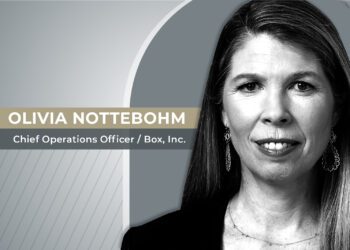President and CEO of defense contractor AeroVironment, Wahid Nawabi believes staying agile and investing in R&D are crucial to playing the long game in an increasingly competitive marketplace.
By Fred Young
Wahid Nawabi’s overarching vision for AeroVironment is of an aerospace and defense company that moves and operates with the agility of a small tech company. The reason behind his thinking is clear: the aerospace and defense industry today depends on increasingly flexible technological solutions and capabilities. “When I took on this role I knew that the future of the defense, civil, and commercial markets—the three we participate in—lay in unmanned systems and that was really exciting to me,” Nawabi told CEO Magazine North America in an exclusive interview. “We are a very unique company at the intersection of three future-defining technologies or capabilities—robotic systems, software and AI, and connectivity and networking.
“We take those three technologies and capabilities and we fuse them together and integrate them to create something truly special. I felt that in all those markets the opportunities for us to expand our business and deliver more value for our customers was significant. I don’t know a single other company that has such a broad portfolio and such deep understanding and expertise in those areas.”
AeroVironment, Inc. is an American defense contractor headquartered in Arlington, Virginia, that is primarily involved in unmanned aerial vehicles (UAVs). The company was founded by Paul B. MacCready Jr., a designer of human-powered aircraft, in 1971. AeroVironment is probably most well known for developing a series of lightweight human-powered and then solar-powered vehicles. It is also the Pentagon’s top supplier of small drones—including the Raven, Wasp and Puma models. In 2021, AeroVironment enjoyed revenue of $394.9 million.
CARDS ON THE TABLE
AeroVironment has recently enjoyed four years of consecutive growth—three of which saw growth in the double digits. It’s a fact Nawabi attributes to the growing interest and demand both in UAVs as a technology and the potential for AI-powered solutions more generally. This growth has been both organic and through acquisitions. In December 2020, for example, AeroVironment acquired Telerob, a German leader in ground robotics solutions with a global footprint for approximately $45.4 million.
Nawabi says that when he looks at the cards his competitors are holding and those available to AeroVironment, there is no question which side of the game he would prefer to be on. “We have a leading market position in the markets that we serve, decades of history, a superb track record, and a reputation for innovation, agility, and delivering and executing on our promises,” he said. “There are not too many companies I know of that are pure play and focused on one specific area in which they have the broad expertise and portfolio we do.”
“The need and demand for unmanned systems coupled with AI is going to be huge and not only in terms of national defense,” Nawabi explained. “Half of Telerob’s customer base is within the civil market where they can be used for public safety, such as bomb squads, for example. In the commercial market, we introduced a UAV solution two years ago called Quantix Mapper which simplified the entire application process of drawing up analytics for farmers in the agricultural industry. In short, there are strong prospects for growth across the board.”
OPERATIONAL EXCELLENCE
Telerob was one of three companies AeroVironment acquired during the pandemic, the others being Progeny Systems Corporation’s Intelligent Systems Group and Arcturus UAV. Nawabi stressed the importance of successfully integrating those businesses whilst developing a common architecture and set of platforms and retaining the agility that the company has become known for.
“Our operational excellence is absolutely key to carrying out that integration process smoothly,” he insisted. “In terms of supply chain, similarly, we work with relatively small firms but the scale we gain enables us to achieve a high level of synergy and efficiencies. We export to no fewer than fifty countries around the world. That’s a large number for any company, and especially for an aerospace and defense company of our size.”
PRIORITZING INNOVATION
Nawabi emphasized his belief that AeroVironment boasts the innovational capabilities and agility of a small-to-mid-size tech company as opposed to a traditional defense contractor, thus enabling it to invest heavily in R&D and plan in advance for the markets it serves. “We’re essentially a Silicon Valley-type tech company in that we invest a significant percentage of our revenue on research and development because we want to develop solutions for our customers way in advance of them coming to ask us for them,” he explained.
“The second part of that is agility. We move like a small commercial technology company with the speed to develop systems, achieve and deliver outcomes, respond to our customers’ needs, and fix, maintain, and provide top quality service. We also have the speed to change direction and be flexible, which is absolutely crucial in a space like ours.”
Yet Nawabi is in little doubt that in a rapidly changing world, what he calls customer intimacy is just as important as it has ever been—if not more so—to a company like AeroVironment as customers require increasingly quick and nuanced solutions to get the best out of their products.
“Our ability to keep up with our customers’ daily operations, needs, and future requirements is simply vital,” he elaborated. “In order to stay ahead, we have to be able to anticipate their needs and that requires knowing their operations intimately, whether they are farmers or soldiers.”
STRATEGIC PARTNERSHIPS
As a company whose success depends on constant innovation, AeroVironment’s systems use the most cutting edge microprocessors, video graphics processors, and semiconductor chips available today, not to mention the very best materials. “If you take our Mars helicopter, every milligram of weight is a matter of success or failure in the execution of its mission,” Nawabi emphasized. “If you look at our unmanned UAV, which has a wingspan of an Airbus 8380 and flies at the edge of the atmosphere, twice as high as a commercial airliner, yet weighs as much as an SUV, we deal with the very best scientists who design those materials. Our supply chain gets involved very early, sometimes two years in advance of a project.”
Nawabi believes that having a long-term perspective on supply chain relationships and strategy is critical for a company as innovative and forward thinking as AeroVironment. Yet he also stressed the importance of taking this approach to all aspects of the company’s operations in order to stay ahead in an increasingly competitive and ever changing marketplace.
“You have to start with a long game and what your business is going to look like three or five years from now,” he told CEO North America. “You have to have the right leadership and set of competencies that allow you to achieve your outcomes and work with your business partners and product line managers to plan for those things in advance. What is the next system you are going to be designing, what product are you going to be launching? What are the lead times? That long-term perspective is extremely important.”












